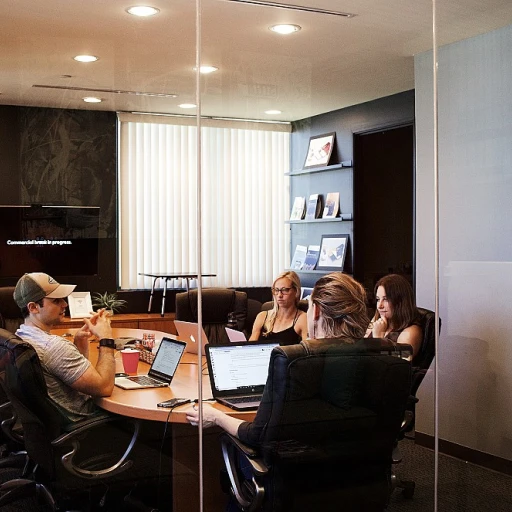
Understanding Controlled Entry Points
Defining Controlled Entry Points for Maximum Security
In the realm of commercial security, controlled entry points have become a cornerstone of ensuring both physical access and data protection within a building. These systems serve a fundamental role in maintaining secure areas and preventing unauthorized access, particularly within sensitive areas such as data centers, offices, and other critical facilities. By implementing vestibules, which are small transitional spaces between the building’s exterior and interior, businesses can exercise greater control over who enters their premises. The design of such systems often includes interlocking doors that only allow one door to open at a time, creating a layered barrier against potential security threats. This configuration can include security glazing and bullet-resistant materials to further fortify entry points against unwarranted breaches. The integration of technology enhances these systems, as keycard access can effectively limit entry to only authorized individuals. Controlled entry systems are not merely about denying access to unauthorized individuals. They also serve to gather important data on access patterns, which can be instrumental in optimizing security protocols and identifying potential vulnerabilities. The challenge lies in balancing physical security with the need for ease of movement within the building. Careful consideration is given to the types of access control systems implemented, from traditional security vestibules to advanced access control systems incorporating the latest tech innovations. By doing so, companies can ensure they are not only secure but also efficient in managing their entry points. For organizations looking to delve deeper into enhancing security measures and understanding the pivotal role of controlled entry systems, learning how these systems integrate with overall corporate security strategy can provide valuable insights to bolster their protective measures.Benefits for UK Companies
Advantages of Controlled Entry Points for UK Businesses
In the UK, businesses are increasingly recognizing the importance of enhancing security through controlled entry points. These systems are not just about restricting access but also about ensuring that only authorized individuals can enter sensitive areas. By implementing these measures, companies can significantly bolster their physical security and protect valuable data.
Here are some key benefits that UK companies can expect from adopting controlled entry systems:
- Enhanced Security: Controlled entry points, such as security vestibules and interlocking doors, prevent unauthorized access to buildings. These systems are designed to ensure that only individuals with the correct credentials can gain entry, thereby reducing the risk of unauthorized access.
- Improved Access Control: With keycard access and other control systems, businesses can monitor who enters and exits their premises. This level of control is crucial for maintaining security in sensitive areas, such as data centers and other critical facilities.
- Increased Safety: By utilizing bullet-resistant materials and security glazing, companies can protect their employees and assets from potential threats. This is particularly important for businesses that handle sensitive data or operate in high-risk industries.
- Efficient Design: Control vestibules and vestibule doors are designed to streamline the flow of individuals while maintaining security. This ensures that entry points are not only secure but also efficient, minimizing delays and disruptions.
- Commercial Security: For businesses in the commercial sector, implementing robust physical access systems is essential for safeguarding their operations. These systems provide a reliable means of preventing unauthorized entry and ensuring that only authorized personnel can access critical areas.
For more insights on how to enhance efficiency with employee leave management solutions, visit this resource.
Implementing Controlled Entry Systems
Design Considerations for Robust Security Systems
When implementing controlled entry systems, a well-thought-out design is crucial to ensure optimal security. To enhance physical access control, companies need to focus on several key factors that integrate seamlessly with the architecture of their buildings. An effective control system should begin with secure vestibules at primary entry points. These vestibules act as buffer zones, preventing unauthorized access into sensitive areas. By incorporating control vestibules, businesses can manage the flow of individuals entering and leaving the premises. Interlocking doors within these vestibules can add an extra layer of security, ensuring that only one door is open at a time. For commercial security, utilizing bullet-resistant materials can fortify security glazing, providing additional protection against physical breaches. Incorporating interlocking doors with keycard access will effectively prevent unauthorized entry while allowing seamless access for authorized individuals. Incorporating technology such as data centers for monitoring offers real-time updates on the status of the entry systems. These systems can gather and analyze data to detect unusual patterns or activities. This level of control allows for quick responses to potential security threats. When considering physical security measures, different types of access control systems can be adapted to fit the specific needs of a company. From traditional keycard access systems to advanced biometric authentication, the choice of system will depend upon the level of security required and budget considerations. Lastly, while designing these systems, it's essential to consider the future scalability. As companies grow, so will their security needs. Hence, design systems with the scalability to adapt and integrate new technologies and features as they emerge. Investing in a structured commercial security system significantly bolsters a company's defense against unauthorized access and enhances the overall security posture of the building. Businesses should strive for seamless integration between security and day-to-day operations for better efficiency and protection.Challenges and Solutions
Overcoming Barriers in Access Control Implementation
Implementing controlled entry systems in UK companies can present several challenges, but with the right strategies, these can be effectively managed. One of the primary concerns is the integration of new access control systems with existing infrastructure. Many buildings may not have been originally designed with modern security systems in mind, making retrofitting a complex task.
Another challenge is ensuring that the control vestibules and interlocking doors are not only secure but also user-friendly. It's crucial to design systems that prevent unauthorized access without causing inconvenience to authorized individuals. This involves selecting the right types of access control systems, such as keycard access or biometric systems, which can efficiently manage physical access to sensitive areas.
Data security is also a significant concern. As these systems often collect and store sensitive data, ensuring robust data protection measures is essential to prevent unauthorized access and breaches. Companies must comply with data protection regulations, which adds another layer of complexity to the implementation process.
To address these challenges, companies can invest in security glazing and bullet-resistant materials for vestibule doors, enhancing the physical security of entry points. Additionally, working with experienced commercial security providers can help design and implement a system tailored to the specific needs of the building and its occupants.
Finally, ongoing training and communication with staff are vital to ensure everyone understands how to use the new systems effectively. This not only helps in preventing unauthorized access but also ensures that the systems are used to their full potential, maintaining a secure environment for all.
Case Studies of Successful Implementation
Success Stories of Secure Buildings
In today’s world, security is a top concern for many companies, and employing effective access control systems has become vital. Several UK companies have successfully secured their premises by integrating controlled entry systems that prevent unauthorized access and ensure only authorized individuals can enter sensitive areas. These companies have employed measures such as access control vestibules designed to create an additional layer of protection. Take, for instance, commercial security implementations where interlocking doors and various types of entry systems have been installed. These systems allow for precise management of who can and cannot enter certain buildings. The vestibule doors are equipped with security glazing and bullet resistant designs to further enhance physical security. Incorporating keycard access and sophisticated control systems has allowed some businesses to monitor and log who enters and exits, aiding in data security and compliance requirements. This is particularly crucial in data centers where protection from unauthorized access is a critical priority. Organizations that have faced challenges in implementing these systems often find solutions through design adjustments or by upgrading existing infrastructure to include modern access control technologies. With the right approach, these systems not only prevent unauthorized individuals from accessing secure areas but also streamline the flow and management within business environments.Future Trends in Access Control
Exploring Future Trends in Access Control Technologies
As companies in the UK continue to prioritize safety and efficiency, advancements in access control technologies are reshaping the landscape of commercial security and physical security systems. The evolution of technology and increased focus on sustainability are driving significant trends in access control that UK companies should consider.- Integration with Smart Building Systems: Modern access control systems are being designed to seamlessly integrate with smart building technologies. This not only enhances security but also offers operational efficiencies. By linking lighting, heating, and other systems to access control, companies can optimize energy usage and reduce operational costs.
- Biometric Authentication: As data centers and sensitive areas demand higher security, biometric authentication methods are gaining popularity. These systems, which use fingerprints, facial recognition, or iris scans, offer a higher level of security by ensuring that only authorized individuals gain entry, thus preventing unauthorized access.
- Mobile Access Solutions: The use of mobile devices for access control is on the rise. Keycard access is gradually being complemented or replaced by mobile credentials, providing employees with the convenience of accessing control systems directly through their smartphones.
- Security Vestibules with Enhanced Features: Advanced control vestibules and security vestibules now come equipped with interlocking doors and security glazing, enhancing physical access controls. The inclusion of bullet-resistant materials ensures that vestibule doors are more robust, offering added protection against unauthorized access attempts.
- Data-Driven Decision Making: The integration of advanced analytics in access control systems allows for the collection of data that can inform strategic decision-making. This data can be used to redesign building layouts for better entry flow, ensure compliance with physical security regulations, and optimize control systems for efficiency.













